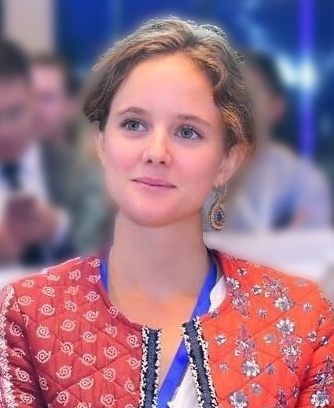Apolline Blandin is a Research Associate and Lead on Cryptoasset and Blockchain at Cambridge Centre for Alternative Finance (CCAF). She leads the Center’s crypto asset research program. She has co-authored two influential benchmarking reports on the state of global crypto assets and blockchain industries, as well as a study on crypto asset regulatory landscape. Her research interests primarily lie in the study of the cryptocurrency mining industry. She holds a bachelor’s degree in International History from the University of Paris Denis Diderot and graduated from Peking University and the London School of Economics with a dual master’s degree in International Affairs.
The Cambridge Centre for Alternative Finance (CCAF) is an international and interdisciplinary research center based at the University of Cambridge Judge Business School. It is dedicated to the study of innovative instruments, channels, and systems emerging outside of traditional finance. This includes, among others, crowdfunding, peer-to-peer lending, alternative payment systems, crypto assets, distributed ledger technology (e.g. blockchain) as well as related regulations and regulatory innovations.
Their series of benchmarking studies analyzing emerging forms of alternative finance provides a comparative global overview of rapidly developing ecosystems impacting the incumbent financial system.
Apolline Blandin
Interview Date : 17th June 2020
Interview with Apolline Blandin
Cambridge Research on Crypto and Blockchain
My name is Apolline Blandin, and I lead the cryptocurrency research program at the Cambridge Centre for Alternative Finance (CCAF). It is a research institute that was established at the University of Cambridge Judge Business school in 2015. In the beginning, some research teams were looking at crowdfunding and digital lending, but in late 2016 they created a research team focusing on cryptocurrencies and blockchain technology.

Apolline Blandin
The purpose of our research is to study this emerging industry, to capture early traits, and gather data to unearth trends and the development of industry standards. These are study reports we usually produce every year, based on non-publicly available data. The data is collected through surveys that we send out to all the companies and instruments operating in the crypto space. This Cryptoasset Benchmarking Study covers four key industry segments: mining, exchange, storage, and payments. The center defines Alternative finance as “Any financial system, instrument or mechanism that emerges outside the traditional financial system”, and crypto assets perfectly fit that definition.
From China to Cambridge
I came across cryptocurrencies for the first time when I was living in Beijing. I heard about cryptocurrency mining, but I wasn’t paying attention to it at that time. After that, I went back to France and worked for the French Association of French tech startups and investors, and collaborated with a couple of crypto asset companies like Ledger, which is providing hardware wallet devices. From there on, I started engaging more in this industry’s people on a regular basis and was fascinated by their work. Also, I have a background in research, so I was mainly interested in the research aspect that is going on in this industry. I decided to go back to research and focus on that, and that is how I ended up here in Cambridge.
My early research was on mobile finance and financial inclusion. Very often, people believe that technology can foster financial inclusion as a way to ensure that more people have access to use financial services that could lead to a decrease in inequality and better development of a country. For my research, I examined this topic and looked into mobile financial. Bitcoin fascinated me because of its framework concept. Initially, I wanted to investigate how much it can benefit financial inclusion. I think I got very interested in the crypto asset industry overall from that point. Most of my research interests focus on Bitcoin because it is probably the one I understand the most at the moment, and the learning curve has never stopped for me. The cryptocurrency industry is a very versatile vast field.
Agnostic Objective Research
The cryptocurrency market is still pretty small in comparison to other markets, but it is interesting because it has its body proposition. Since the inception of Bitcoin in 2009, we have seen a massive industry emerging around crypto assets, so it is crucial to study it in-depth. I also believe that it is a great opportunity to raise greater awareness about what money is and how monetary systems work. It is great if people have convictions, but from a research standpoint, we are coin or blockchain-agnostic, so we are interested in asking questions and answering them as objectively as possible without strong ideologies behind.
Cambridge Crypto Classes and PhD
At Cambridge, there are a couple of professors who are looking at cryptocurrency right now. The former chief economist at the CFTC in the US (Dr. Andrei Kirilenko) has been looking at this from a financial and regulatory perspective. The Economics Department has been looking at cryptocurrencies and blockchain technology from a microeconomic angle. The Cambridge computer lab from the Computer Science department as also been looking into cryptocurrencies and the industry. Also, some departments have a full PhDs focused on distributed ledgers.
The students at Cambridge are very interested in cryptocurrencies and blockchain technology. There is a student-lead organization called the “Cambridge blockchain society” where we have people from very different study backgrounds, like students from the Computer lab, Law department, Economics, and Finance department, and more, so it’s quite diverse.
Geographical Diversity in Research
Our research is global, so we need to make sure that our research samples represent the industry and its diversity as much as possible. We have to make sure that we obtain a balanced sample in geographic terms. That is a struggle sometimes as a lot of the exchanges, and other service providers do not respond.
That happened with Chinese companies based in China. In the first survey conducted in late 2016, we had a significant number of Chinese companies participating. However, in the following year, it was much harder to get Chinese companies to participate. We surveyed mid-2018, and that was a few months after the Chinese government issued a ban on the exchange of cryptocurrencies for CNY (September 2017). A lot of companies were reluctant to take the survey because they were afraid of disclosing any information and were busy relocating their operations in other jurisdictions. Issues like this happen all the time, but we try to capture the whole industry globally as much as possible. This year, the survey has been translated into seven different languages. We have members who speak Chinese, Arabic, Ukrainian, and Russian on our team, and we would like to diversify as much more as we can.
Jurisdictional Disparity
We did a study back in April 2019 on the regulatory landscape of crypto assets and looked at 23 jurisdictions. The regulatory response to the emergence of crypto assets varied from one region to another. Some have developed what we call a bespoke regulatory regime like Bermuda, whereas others have decided to retrofit existing regulations like Japan. So it is very different when you look at the same industry having so different jurisdictions from one region to another, and this inconsistency makes it hard for the industry to be fully compliant and accurately abide by the rules. In the legal world, they talk about the “chilling effect of regulation”; when the regulation is too vague, it makes companies uncertain about what is allowed and what is not, discouraging the use of crypto assets.
Different Terminology Struggles
We all have a terminology problem, and this is a big highlight of our study. People use a variety of terms to refer to a variety of things, terms like crypto assets, cryptocurrencies, virtual currencies, digital currencies, and more, have made the conversation extremely confusing. So, we have set a narrow definition for the term “crypto asset”. We define the term as “any digital unit that is issued and transferred via a public blockchain that plays an essential role in the economic and incentive mechanism of the system”, such as Bitcoin or Ethereum. The rest falls under the broad term of “digital assets” which often is a tokenized form as an asset that already exists in the real world. That this is a very important distinction which not a lot of people make, so we had to clarify what we meant by the term “crypto asset” in our survey and research.
CCAF Study crypto asset
The goal is to create data for people who would like to study and further analyze it, and for newcomers emerging into this business in some years. So we have to have consistency in the questions that we ask. Some questions shall not change from one year to another as we want to see how it has evolved from the previous year. However, as new topics develop in this area, we include new questions. For example, this year added additional questions about taxation, insurance, and a couple of questions about miner hedging strategies. So, we try to keep a core of questions as a consistent variable, but other than that, new questions will be added as the industry evolves.
Other Research Areas at CCAF
The survey is our focal point, but we also engaged in other projects and researches, such as mining projects. I think that the mining industry is often overlooked and is not understood very well by external observers. Thus, we recently created a “Bitcoin Electricity Consumption Index” that is a website with a real-time estimate showing how much electricity is being consumed by the Bitcoin network. On top of that, we collaborated with mining pools to understand the geographic distribution of Bitcoin hash rate power as well. Such projects are very important for us as well, but it is important that the industry engages and participates in the scientific processes as well, and which helps us uncover topics that are not studied sufficiently.
3 Main Goal of Survey
There are three main goals with this survey. The first one is to provide a data repository for anyone who would like to study this industry. It is an emerging industry, and like any emerging industry, there is not much data collected on it. So, you need to created data representation and make sure that you are following them closely to see how they are evolving.
The second goal is to enable greater understanding and transparency of the industry. For instance, we see a lot of regulators are trying to understand these new technologies and concepts to get a clearer understanding of how this industry exists and develops.
The third goal is from a pure research perspective that is also enabling more people to research this specific industry. That is due to the more participants in this field who do more research will contribute to its evolvement and further investigation to bring more clarity, safety, and transparency to it.
Interviewer , Editor : Lina Kamada
【Disclaimer】
The Article published on this our Homepage are only for the purpose of providing information. This is not intended as a solicitation for cryptocurrency trading. Also, this article is the author’s personal opinions, and this does not represent opinion for the Company BtcBox Co.,Ltd.

